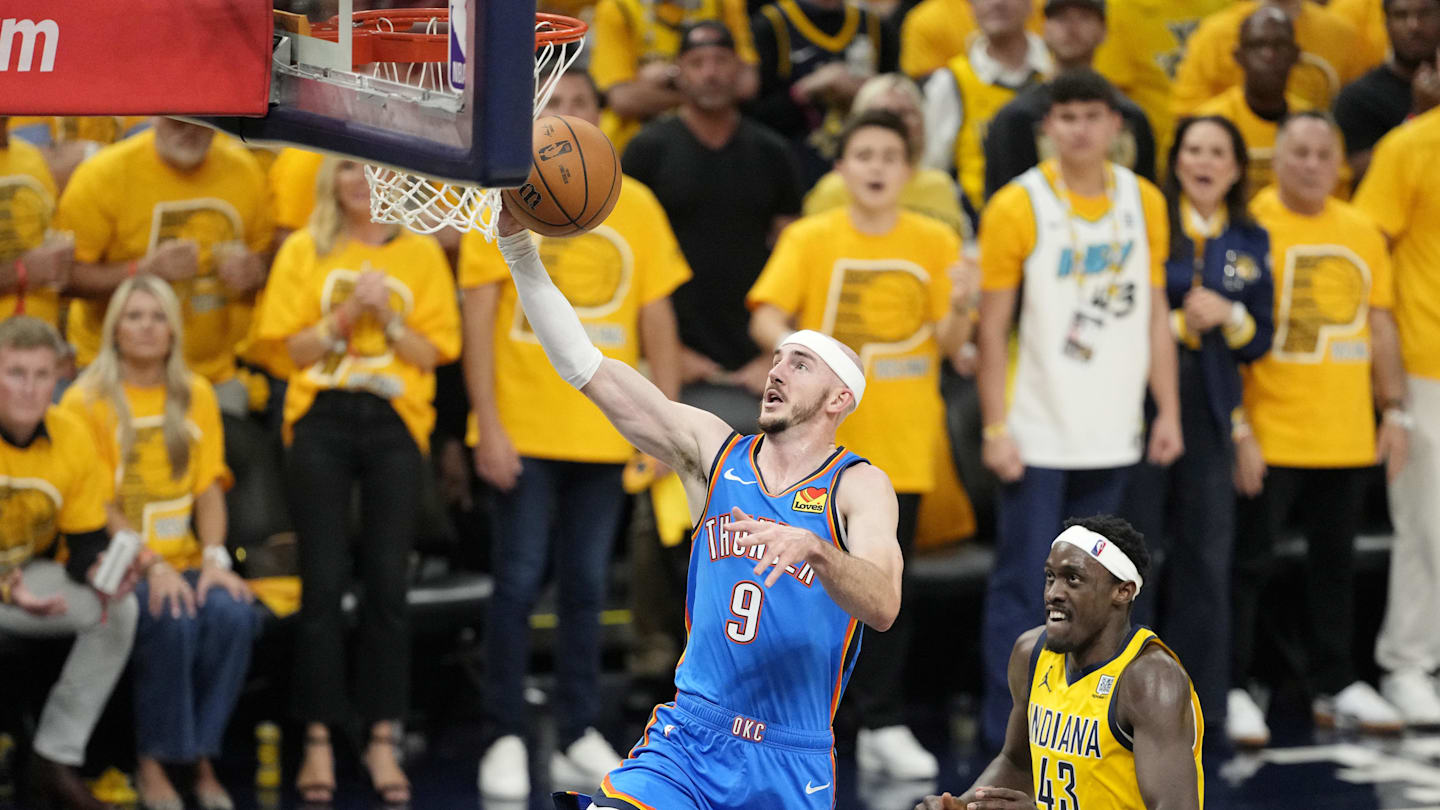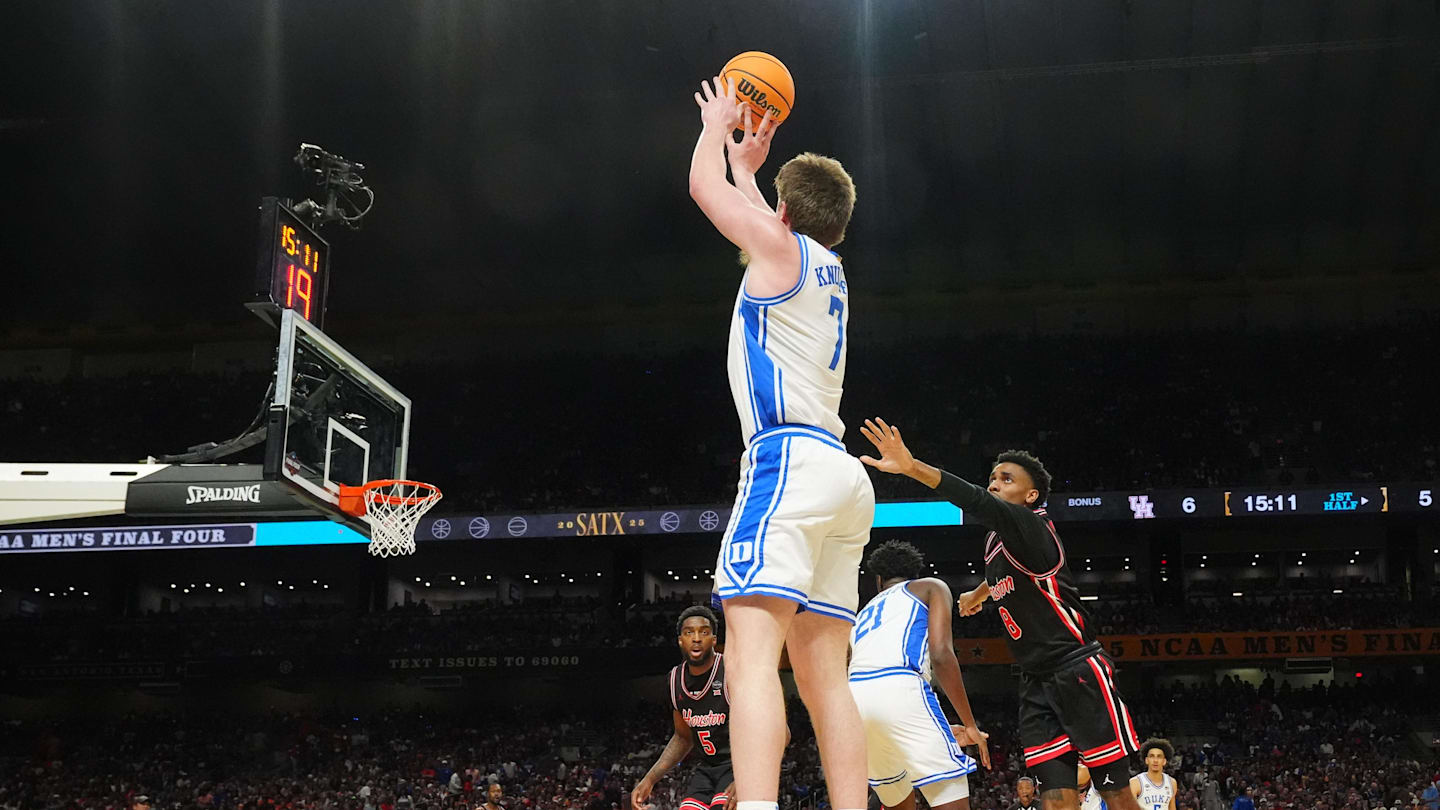INDIANAPOLIS — A few hours before the Indiana Pacers faced the Oklahoma City Thunder in Game 3 of the NBA Finals, I had the opportunity to speak with the great Oscar Robertson and his daughter, Mari, in their downtown hotel suite.
Robertson, one of the most significant players in Indiana’s rich basketball history, was invited by the NBA and the Pacers to help celebrate the team’s first Finals appearance in 25 years. Robertson received a warm reception when he was introduced, as the Pacers defeated the Thunder 116-107 to take a 2-1 lead in their best-of-seven series.
Robertson is a demanding critic, but he’s been impressed with Tyrese Haliburton, the Pacers’ star guard. On Wednesday, Haliburton scored 22 points, handed out 11 assists and grabbed nine rebounds, though it was his teammate, Bennedict Mathurin, who rose to the occasion, scoring a game-high 27 points.
“Stars have to come to play,” Robertson said. “Stars have to play well in big games. They can’t go off somewhere and not play well.”
Robertson, 86, represents a significant part of Indiana’s rich basketball history and an important part of the state’s racial heritage.
As a junior at all-Black Crispus Attucks High School, Robertson was the engine of a team that went 31-1 and won the 1955 Indiana state championship. Attucks became the nation’s first all-Black high school to win a state championship. Equally as significant, Attucks became the first Indianapolis high school team to win a state title.
That championship was also the beginning of a racial awakening for young Robertson that opened his eyes to racial realities in Indiana and throughout the United States. In segregated Indianapolis, Robertson lived in a bubble.
“I mean, not a lot happened when I was in high school, because I really didn’t go around any white people,” he said. “I mean, I was in an all-Black neighborhood. I didn’t go downtown. The only time I went downtown was to get the bus and go back to Tennessee to see my grandparents.”
After Attucks’ first state championship, the team was given a parade that ran through the city. But instead of the parade taking the traditional route and winding up downtown in the circle, the team was taken to a park in the Black part of town to continue the celebration. The apparent concern was that African Americans would damage property and the presence of so many would offend the sensibilities of white residents.
The Attucks coach, Ray Crowe, didn’t tell the team what was planned.
“I didn’t know anything at the time. I’m 17 years old. I didn’t know what they were doing,” Robertson said. “No one explained to the team.”
A year later, as a senior, Robertson averaged 24.0 points and was named Indiana Mr. Basketball as Attucks finished 31-0, the first Indiana high school to go undefeated, en route to winning a second consecutive state championship.

Diamond Images/Getty Images
After Attucks won the second championship, Roberston refused to accompany the team on the parade route because he knew what was coming.
“In 1956, they did the same thing, but I didn’t go,” he said. “I didn’t even get on the fire truck to go downtown. I just went home.”
While progress, to an extent, depends on anesthetizing the past, you never forget. That slight — rather Robertson’s reaction to it — set the tone for how he would respond to slights throughout his adult life. Forgive, not forget.
Robertson enjoyed a legendary college and NBA career. He won an Olympic gold medal in 1960, became a two-time Naismith Basketball Hall of Fame inductee, and was the first player to average a triple-double for an NBA season. Despite the accolades, Robertson has never forgotten some of slights he suffered along the way.
A little more than 30 years after the truncated 1955 parade, Indianapolis, in a gesture of atonement, held a proper parade around the circle for that 1955 Crispus Attucks team.
Robertson, who was 50 at the time, was not planning to attend. His teammates convinced him that he should. “I eventually did it for the guys,” he said.
“People keep saying ‘Can’t you forget that?’ I said yeah, but that 17-year-old kid will never forget that.”
Robertson’s and his team’s history is memorialized at Crispus Attucks High School in a portion of the school that has been turned into a museum.
Unlike today’s young players who look to play pro basketball as early as 10 years old, Robertson didn’t grow up yearning to play professionally, though there was professional basketball in Indiana.
The Indianapolis Olympians were an NBA team founded in 1949, but it folded in 1953. The Fort Wayne Pistons were members of the NBA until they left for Detroit in 1957.
“Despite all the basketball that I played in high school, no teacher ever mentioned playing basketball. They didn’t really talk about a scholarship, per se — some of the coaches did, and so I got an opportunity,” Robertson said. “I wanted to get a degree in business. I always wanted to go into business, so that’s what I wanted to do.”
Robertson left the state of Indiana to attend college. I wondered why the state’s most decorated player left the state rather than attend Indiana University.
He recalled a meeting he and coach Crowe had with Branch McCracken, the legendary Indiana University basketball coach.
“He kept us waiting for a little while, then he came out and sat down, you know, like he was busy. Then he said, ‘I know you’re not the type of kid who wants money to go to school.’ ”
“I said, ‘What are you talking about?’ He said, ‘I know you’re not the type of kid who wants money to go to school.’ I didn’t know kids got money to go to school. So, after he said that I looked at my coach and said, ‘Mr. Crowe, I want to leave.’ He never asked me to come to Indiana. That’s why I didn’t go.”
Instead, Robertson played for the University of Cincinnati from 1957 to 1960 and enjoyed a stellar All-America career. He didn’t begin thinking about pro basketball until he attended Cincinnati and met Jack Twyman, who played at Cincinnati from 1951-55.
When they met, Twyman was playing for the Rochester Royals.
“I used to work out with him a lot, and just talked with him about ball,” Robertson recalled.

Robertson was drafted by the Cincinnati Royals and spent a decade there without winning a title. He was traded to the Milwaukee Bucks in 1970. A year later, he won his first and only NBA title with Kareem Abdul-Jabbar as his teammate.
For all the accolades and accomplishments, the most significant signature moment of his career came the year he joined the Bucks. Robertson was president of the players association at the time and took on the NBA.
Robertson v. National Basketball Association was a class-action lawsuit filed in 1970. The intent of the suit was simple: Players wanted better playing conditions, and they wanted assurance that when they no longer wanted to play for a team that they were free to shop their services to the highest bidder.
The Robertson Rule sought to end the so-called “option clause,” under which a player was bound to a team for life — or until the team wanted to end the relationship.
In 1976, two seasons after Robertson’s retirement, the NBA settled. One of the most important provisions of the settlement was the Oscar Robertson Rule that effectively pit owners against owners in a bid to sign the best players.
Free agency became the law of the land and steadily escalating salaries became the norm.
Perhaps because of his suit against the league, Roberston’s final chapter with the Bucks did not have a happy ending. Though the Bucks reached the NBA Finals in 1974, the organization made it clear that it did not want to bring him back for another year.
“So, I just said, give me $250,000 and I won’t come back anymore,” he said.
The Bucks held an Oscar Robertson Day, which the Big O graciously attended, though much like the aborted parade when he was at Attucks, Robertson took the Bucks’ action as a slight he would not forget.
He was only 36 at the time. I wondered why he didn’t continue to play?
“I was finished,” he said.
Was he ready to retire?
“I was just tired of Milwaukee,” he said.

Heinz Kluetmeier/Sports Illustrated via Getty Images
Before I left, our conversation returned to the topic of the day and the reason Roberstson was back in town: The Pacers.
The Pacers were an original American Basketball Association team founded in 1967 when Robertson was with the Royals. They became part of the NBA in 1976 after Robertson had retired.
He said he liked the Pacers and appreciates the team’s significance to the community.
“It means a lot. It means a lot for the city, it means a lot to the players,” he said.
While the Pacers were pronounced underdogs entering the series against the Thunder, Robertson said he felt the team had what it takes to pull off the series upset, provided they continue to play with a sense of desperation.
“When I see a situation now with Oklahoma City and Indianapolis, they talk about Oklahoma City’s got this, they got that,” Robertson said. “I tell all the Pacers: ‘Listen, man, you don’t get here but once, once in a lifetime. You might never get back here again. So, when they toss the ball up, that’s when you got to go.’ ”
The Pacers heeded the Big O’s call on Wednesday by beating the Thunder and coming two games closer to winning the city’s first NBA title. That title would add to Indiana’s rich basketball legacy.
It will be the second-most significant basketball title in state history, because nearly 70 years ago a high school from the Black side of town, led by a generational player named Oscar Robertson, pulled a state together and proved that all things are possible.
Robertson’s Crispus Attucks team taught the city an enduring lesson in perseverance and forgiveness.


